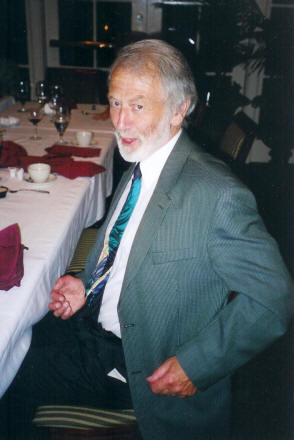|
Author of the Colin
Baxter publication

ROBERT
BURNS
Interview By Frank R. Shaw, FSA Scot,
Atlanta, GA, USA
email:
jurascot@earthlink.net
Q: How long have you
been teaching courses and lecturing on Robert Burns?
A:
Twenty years, man and boy.
Q: What are your
favorite research books on Burns? If you could have only three or four
books on Burns, which books would you pick?
A:
Thomas Crawford, Burns: A Study of the Poems and Songs; J.
DeLancey Ferguson, The Pride and the Passion; and J. DeLancey
Ferguson and G. Ross Roy, The Letters of Robert
Burns
Q: Does this apply for
the person just starting out with Burns?
A: Yes, but the
books by Donald Low, Carol McGuirk, Liam McIvanney, David Diaches, and –
forthcoming – Gerald Carruthers are all useful.
Q: As a child, who was
the first to teach you about Robert Burns? What is your favorite poem by
Burns? Your favorite song by Burns?
A: I heard my
grandparents singing Burns songs; and a teacher in grade 3 was a Burns
enthusiast. Favorite poem has to be a dead-heat between “Holy Willie’s
Prayer” and “Tam O’Shanter”, but given the richness and wide range, it’s
a difficult choice. Favorite song - equally difficult - is probably “Ae
Fond Kiss” with a “Red, Red Rose” and “Auld Lang Syne” following close.
Q: Who are some of the
people who have influenced you with their works on Robert Burns? Please
list why.
A: Thomas Crawford’s
work is unsurpassed. Carol McGuirk’s book came out at the same time as
mine, but it has greatly influenced me; and G. Ross Roy has been
inspirational and strongly supportive.
Q: When did you decide
to devote your life to teaching Burns on the University level?
A: I took over the
teaching of Scottish Literature at the University of Strathclyde in 1986
when Douglas Gifford moved to Glasgow University. Previously I had
taught eighteenth-century literature and the novel as genre.
Q: Burns has been dead
since 1796. What do you attribute the continuing interest in Burns
around the world after all these years?
A: He speaks clearly,
movingly, entertainingly of universal human experience. I’ve just been
teaching Scottish Literature at the University of Connecticut. One of
the high spots of my career was when my students said the language of
Ramsey, Ferguson, and Burns was no barrier because they were writing of
universal experience – music to my ears.
Q: From beginning until
the end, how long was this Simpson/Baxter book in the works before it
was published? Who’s idea was it?
A:
About a year. I was approached by Mike Rensner of Colin Baxter
Photography. He was responsible for the illustrations, and I’m delighted
with them.
Q: In your book, C. M.
Hardie’s painting, “Burns’s First Meeting with Walter Scott”, begs the
question, when did they meet again?
A: I think there is a
reference somewhere to Scott as an adolescent spying Burns in an
Edinburgh street.
Q: The residence of
“Clarinda” is shown in your book. However, the address is not listed.
Can you supply the address and some landmarks to find it for those of us
interested in looking it up on our next trip to Edinburgh?
A: The house that is
shown is her later residence, 14 Calton Hill. It has been refurbished
and is now private residences. When Burns met Clarinda she was living in
General’s Entry, Potterrow.
Q: This past academic
year you spent several months teaching at the University of Connecticut.
What subjects did you teach? Where else have you been a guest professor
since your retirement from the University of Strathclyde?
A: I was back at
University of Connecticut as Neag Distinguished Visiting Professor of
British Literature (I had served in this capacity back in ’99). I taught
a graduate class in The Novel (12 students) and an undergraduate class
(21 students) entitled The Scottish Literary Tradition. I’ve twice been
privileged to be W. Ormiston Roy International Research Fellow in Poetry
at the University of South Carolina.
Q: How do you help
people who are turned off by Burns’s extramarital affairs transcend
those indiscretions and see Burns the poet and songwriter?
A: By reminding them
that we are all human; by recommending that they read “Address to the
Unco’ Guid”; and by enthusing about his achievements as a poet and
songwriter.
Q: If Burns was alive
and you could ask him one question, what would it be?
A: How do you do it?
Q: Thank you for your
courtesies concerning this book review and “chat” article. Is there a
parting word you would like to leave with our readers?
A: I hope they will
get great enjoyment from their reading of Burns. (FRS: 8-22-05) |
